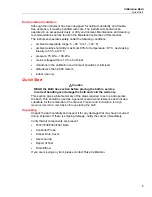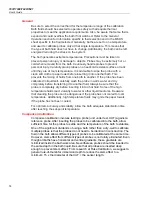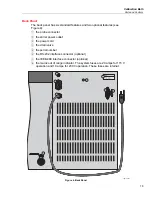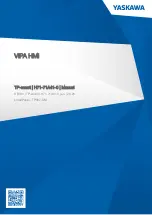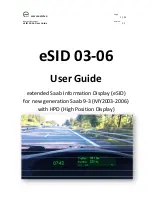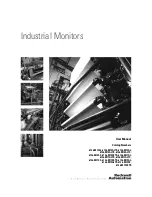
Calibration Bath
Bath Use
13
Remove any access hole cover from the bath and check the tank for foreign
matter (dirt, remnant packing material, etc.). Use clean unpolluted fluid. Carefully
fill the bath through the large square access hole to a level that will allow for
stirring and thermal expansion. The fluid should never exceed a height of
12.7 mm (1/2 inch) below the top of the tank. Carefully monitor the bath fluid level
as the bath temperature rises to prevent overflow or splashing. Remove excess
fluid if necessary and with caution if the fluid is hot.
Be careful to prevent bath fluid from spilling on the stirring motor while filling.
W
Caution
Underfilling may reduce bath performance and may possibly
damage the bath heater.
Probe
Inspect the bath controller probe. This probe should not be bent or damaged in
any way. Reasonable caution should be used in handling this probe as it
contains a precision platinum sensor and is mechanically shock sensitive.
Dropping, striking, or other physical shock may cause a shift in resistance in the
probe resulting in diminished bath accuracy. If damaged, the probe can be
replaced by contacting an Authorized Service Center for assistance.
Insert the probe into the 6.35 mm (1/4 inch) probe hole at the top left side of the
bath lid. The tip of the probe must be well immersed in the fluid. The probe
connector is plugged into the rear of the bath into the socket labeled “PROBE”.
Power
With the bath power switch off, plug the bath into an AC mains outlet of the
appropriate voltage, frequency, and current capacity (see the
Specifications
section). Refer to and read the Caution at the front of the manual concerning
brownout and over voltage protection.
W
Caution
Check the back panel label for the correct voltage and
frequency prior to energizing the unit.
Be sure the stirring motor power cord is plugged into the “STIRRER” socket at
the back of the bath.
Bath Use
READ BEFORE PLACING THE BATH IN SERVICE.
The information in this section is for general information only. It is not designed to
be the basis for calibration laboratory procedures. Each laboratory will need to
write their own specific procedures.











